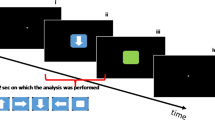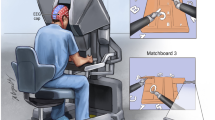Abstract
To study the underlying neural mechanisms of human cognitive and physical activities, various neuroimaging techniques such as fMRI, fNIRS, and EEG have been used. Dynamic causal modeling (DCM) for EEG method has gained a considerable amount of attention in recent years for exploring the directional causal relationship between brain areas. Studies using the DCM for EEG method have investigated contemporary neuroergonomics research topics such as mechanisms behind the event-related potential (ERP) components, mismatch negativity (MMN), abnormal coupling of neural regions in neurologically disordered patients, and causal connections supporting motor tasks. This chapter is a good guide for both novice and experienced neuroergonomics researchers as it introduces the motivations behind DCM for EEG and its developmental timelines, as well as explains fundamentals of the DCM for EEG including the neural mass models, state and observer’s equation, and the model selection processes. This chapter also summarizes recent studies that used the DCM for EEG method in the past 10 years in terms of the tasks, preprocessing steps, model construction, and selection. Lastly, recommendations for the future DCM-based neuroergonomics research are presented.
Access this chapter
Tax calculation will be finalised at checkout
Purchases are for personal use only
Similar content being viewed by others
References
Acs, F., & Greenlee, M. W. (2008). Connectivity modulation of early visual processing areas during covert and overt tracking tasks. NeuroImage, 41, 380–388.
Adebimpe, A., Bourel-Ponchel, E., & Wallois, F. (2018). Identifying neural drivers of benign childhood epilepsy with centrotemporal spikes. Neuroimage-Clinical, 17(December), 739–750.
Ashburner, J., Barnes, G., Chen, C., Daunizeau, J., Moran, R., Henson, R., … Phillips, C. (2013). SPM12 manual the FIL methods group (and honorary members). Functional Imaging Laboratory, 475–1.
Auksztulewicz, R., & Blankenburg, F. (2013). Subjective rating of weak tactile stimuli is parametrically encoded in event-related potentials. Journal of Neuroscience, 33(29), 11878–11887.
Babajani-Feremi, A., Gumenyuk, V., Roth, T., Drake, C. L., & Soltanian-Zadeh, H. (2012). Connectivity analysis of novelty process in habitual short sleepers. NeuroImage, 63(3), 1001–1010.
Brown, H. R., & Friston, K. J. (2012). Dynamic causal modelling of precision and synaptic gain in visual perception—An EEG study. Neuroimage, 63(1), 223–231.
Brown, H. R., & Friston, K. J. (2013). The functional anatomy of attention: A DCM study. Frontiers in Human Neuroscience, 7.
Chen, C. C., Henson, R. N., Stephan, K. E., Kilner, J. M., & Friston, K. J. (2009). Forward and backward connections in the brain: A DCM study of functional asymmetries. NeuroImage, 45(2), 453–462.
Cooray, G. K., Garrido, M. I., Brismar, T., & Hyllienmark, L. (2016). The maturation of mismatch negativity networks in normal adolescence. Clinical Neurophysiology, 127(1), 520–529.
Cooray, G. K., Sengupta, B., Douglas, P., Englund, M., Wickstrom, R., & Friston, K. (2015). Characterising seizures in anti-NMDA-receptor encephalitis with dynamic causal modelling. Neuroimage, 118, 508–519.
David, O., & Friston, K. J. (2003). A neural mass model for MEG/EEG: Coupling and neuronal dynamics. NeuroImage, 20(3), 1743–1755.
Dietz, M. J., Friston, K. J., Mattingley, J. B., Roepstorff, A., & Garrido, M. I. (2014). Effective connectivity reveals right-hemisphere dominance in audiospatial perception: Implications for models of spatial neglect. Journal of Neuroscience, 34(14), 5003–5011.
Dietz, M., Roepstorff, A., & Garrido, M. (2012). Functional asymmetry in the brain′s response to left and right auditory space: A DCM study (1999).
Díez, Á., Ranlund, S., Pinotsis, D., Calafato, S., Shaikh, M., Hall, M.-H. H., … Bramon, E. (2017). Abnormal frontoparietal synaptic gain mediating the P300 in patients with psychotic disorder and their unaffected relatives. Human Brain Mapping, 38(6), 3262–3276.
Fogelson, N., Litvak, V., Peled, A., Fernandez-del-Olmo, M., & Friston, K. (2014). The functional anatomy of schizophrenia: A dynamic causal modeling study of predictive coding. Schizophrenia Research, 158(1–3), 204–212.
Friston, K. (2009). Causal modelling and brain connectivity in functional magnetic resonance imaging. PLoS Biology, 7(2), 0220–0225.
Friston, K. J. (2011). Functional and effective connectivity: A review. Brain Connectivity, 1(1), 13–36.
Friston, K. J., Glaser, D. E., Henson, R. N. A., Kiebel, S., Phillips, C., & Ashburner, J. (2002). Classical and Bayesian inference in neuroimaging : Applications, 512, 484–512.
Garrido, M. I., Friston, K. J., Kiebel, S. J., Stephan, K. E., Baldeweg, T., & Kilner, J. M. (2008). The functional anatomy of the MMN: A DCM study of the roving paradigm. NeuroImage, 42(2), 936–944.
Garrido, M. I., Kilner, J. M., Kiebel, S. J., Stephan, K. E., Baldeweg, T., & Friston, K. J. (2009). Repetition suppression and plasticity in the human brain. Neuroimage, 48(1), 269–279.
Garrido, M. I., Kilner, J. M., Kiebel, S. J., Stephan, K. E., & Friston, K. J. (2007). Dynamic causal modelling of evoked potentials: A reproducibility study. Neuroimage, 36(3), 571–580.
Hauser, T. U., Iannaccone, R., Staempfli, P., Drechsler, R., Brandeis, D., Walitza, S., & Brem, S. (2014). The feedback-related negativity (FRN) revisited: New insights into the localization, meaning and network organization. Neuroimage, 84, 159–168.
Herz, D. M., Christensen, M. S., Reck, C., Florin, E., Barbe, M. T., Stahlhut, C., … Timmermann, L. (2012). Task-specific modulation of effective connectivity during two simple unimanual motor tasks: A 122-channel EEG study. Neuroimage, 59(4), 3187–3193.
Herz, D. M., Florin, E., Christensen, M. S., Reck, C., Barbe, M. T., Tscheuschler, M. K., … Timmermann, L. (2014). Dopamine replacement modulates oscillatory coupling between premotor and motor cortical areas in Parkinson’s disease. Cerebral Cortex, 24(11), 2873–2883.
Herz, D. M., Siebner, H. R., Hulme, O. J., Florin, E., Christensen, M. S., & Timmermann, L. (2013). Levodopa reinstates connectivity from prefrontal to premotor cortex during externally paced movement in Parkinson’s disease. Neuroimage, 90, 15–23.
Jansen, B. H., & Rit, V. G. (1995). Electroencephalogram and visual evoked potential generation in a mathematical model of coupled cortical columns. Biological Cybernetics, 73(4), 357–366.
Kibleur, A., Polosan, M., Favre, P., Rudrauf, D., Bougerol, T., Chabardes, S., & David, O. (2017). Stimulation of subgenual cingulate area decreases limbic top-down effect on ventral visual stream: A DBS-EEG pilot study. Neuroimage, 146, 544–553.
Kiebel, S., David, O., Friston, K. J., Kiebel, S. J., David, O., & Friston, K. J. (2006). Dynamic causal modelling of evoked responses in EEG/MEG with lead field parameterization. Neuroimage, 30(4), 1273–1284.
Kiebel, S. J., Garrido, M. I., Moran, R., Chen, C.-C., & Friston, K. J. (2009). Dynamic causal modeling for EEG and MEG. Human Brain Mapping, 30(6), 1866–1876.
Kim, Y. K., Park, E., Lee, A., Im, C. H., & Kim, Y. H. (2018). Changes in network connectivity during motor imagery and execution. PLoS ONE, 13(1), 1–18.
Knösche, T. (2013). Jansen-Rit model. Encyclopedia of Computational Neuroscience, 2(1), 1–5.
Larsen, L. H., Zibrandtsen, I. C., Wienecke, T., Kjaer, T. W., Langberg, H., Nielsen, J. B., & Christensen, M. S. (2018). Modulation of task-related cortical connectivity in the acute and subacute phase after stroke. European Journal of Neuroscience, 47(8), 1024–1032.
Legon, W., Punzell, S., Dowlati, E., Adams, S. E., Stiles, A. B., & Moran, R. J. (2016). Altered prefrontal excitation/inhibition balance and prefrontal output: Markers of aging in human memory networks. Cerebral Cortex, 26(11), 4315–4326.
Li, F., Wang, J., Jiang, Y., Si, Y., Peng, W., Song, L., … Xu, P. (2018). Top-down disconnectivity in schizophrenia during P300 tasks. Frontiers in Computational Neuroscience, 12.
Litvak, V., Mattout, J. J., Kiebel, S., Phillips, C., Henson, R., Kilner, J., … Friston, K. (2011). EEG and MEG data analysis in SPM8. In Computational Intelligence and Neuroscience, 2011 (June 2016).
Liu, T., Li, F., Jiang, Y., Zhang, T., Wang, F., Gong, D., … Qiu, K. (2017). Cortical dynamic causality network for auditory-motor tasks. IEEE Transactions of Neural Systems and Rehabilitation Engineering, 25(8), 1092–1099.
Loehrer, P. A., Nettersheim, F. S., Jung, F., Weber, I., Huber, C., Dembek, T. A., … Timmermann, L. (2016). Ageing changes effective connectivity of motor networks during bimanual finger coordination. Neuroimage, 143, 325–342.
Oestreich, L. K. L., Whitford, T. J., Garrido, M. I., & Garrido I. M. (2018). Prediction of speech sounds is facilitated by a functional fronto-temporal network. Frontiers in Neural Circuits, 12(May), 1–10.
Parkinson, A. L., Korzyukov, O., Larson, C. R., Litvak, V., & Robin, D. A. (2013). Modulation of effective connectivity during vocalization with perturbed auditory feedback. Neuropsychologia, 51(8), 1471–1480.
Penny, W., Iglesias-Fuster, J., Quiroz, Y. T., Lopera, F. J., & Bobes, M. A. (2018). Dynamic causal modeling of preclinical autosomal-dominant Alzheimer’s disease. Journal of Alzheimers Disease, 65(3), 697–711.
Peterson, D. S., & Fling, B. W. (2018). How changes in brain activity and connectivity are associated with motor performance in people with MS. NeuroImage: Clinical, 17(June 2017), 153–162.
Ranlund, S., Adams, R. A., Díez, Á., Constante, M., Dutt, A., Hall, M.-H. H., … Bramon, E. (2016). Impaired prefrontal synaptic gain in people with psychosis and their relatives during the mismatch negativity. Human Brain Mapping, 37(1), 351–365.
Sato, W., Kochiyama, T., Uono, S., Matsuda, K., Usui, K., Usui, N., … Toichi, M. (2017). Bidirectional electric communication between the inferior occipital gyrus and the amygdala during face processing. Human Brain Mapping, 38(9), 4511–4524.
Shayegh, F., Amirfattahi, R., & Ansari-asl, K. (2014). Hippocampal effective synchronization values are not pre-seizure indicator without considering the state of the onset channels. Network: Computation in Neural Systems (July).
Silchenko, A. N., Adamchic, I., Hauptmann, C., & Tass, P. A. (2013). Impact of acoustic coordinated reset neuromodulation on effective connectivity in a neural network of phantom sound NeuroImage Impact of acoustic coordinated reset neuromodulation on effective connectivity in a neural network of phantom sound. NeuroImage, 77(March).
Stephan, K. E., Penny, W. D., Daunizeau, J., Moran, R. J., & Friston, K. J. (2009). Bayesian model selection for group studies. Neuroimage, 46(4), 1004–1017.
Stephan, K. E., Penny, W. D., Moran, R. J., den Ouden, H. E. M. M., Daunizeau, J., & Friston, K. J. (2010). Ten simple rules for dynamic causal modeling. Neuroimage, 49(4), 3099–3109.
Stephan, K. E., Weiskopf, N., Drysdale, P. M., Robinson, P. A., & Friston, K. J. (2007). Comparing hemodynamic models with DCM. NeuroImage, 38, 387–401.
Sumner, R. L., Mcmillan, R. L., Shaw, A. D., Singh, K. D., Sundram, F., & Muthukumaraswamy, S. D. (2018a). Peak visual gamma frequency is modified across the healthy menstrual cycle. Human Brain Mapping (March), 3187–3202.
Sumner, R. L., Spriggs, M. J., Mcmillan, R. L., Sundram, F., Kirk, I. J., & Muthukumaraswamy, S. D. (2018b). Neural plasticity is modified over the human menstrual cycle: Combined insight from sensory evoked potential LTP and repetition suppression. Neurobiology of Learning and Memory, 155(August), 422–434.
Tsai, M.-C., Cai, Y.-X., Wang, C.-D., Zheng, Y.-Q., Ou, J.-L., & Chen, Y.-H. (2018). Tinnitus abnormal brain region detection based on dynamic causal modeling and exponential ranking. Biomed Research International.
Author information
Authors and Affiliations
Corresponding author
Editor information
Editors and Affiliations
Rights and permissions
Copyright information
© 2020 Springer Nature Switzerland AG
About this chapter
Cite this chapter
Huang, J., Nam, C.S. (2020). Dynamic Causal Modeling (DCM) for EEG Approach to Neuroergonomics. In: Nam, C. (eds) Neuroergonomics. Cognitive Science and Technology. Springer, Cham. https://doi.org/10.1007/978-3-030-34784-0_8
Download citation
DOI: https://doi.org/10.1007/978-3-030-34784-0_8
Published:
Publisher Name: Springer, Cham
Print ISBN: 978-3-030-34783-3
Online ISBN: 978-3-030-34784-0
eBook Packages: Intelligent Technologies and RoboticsIntelligent Technologies and Robotics (R0)




